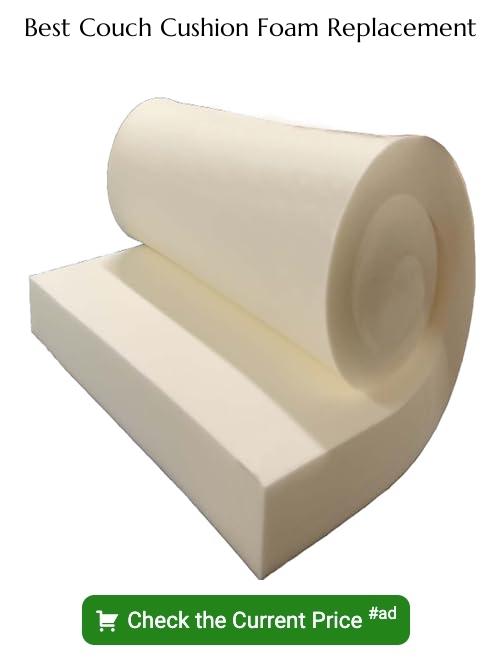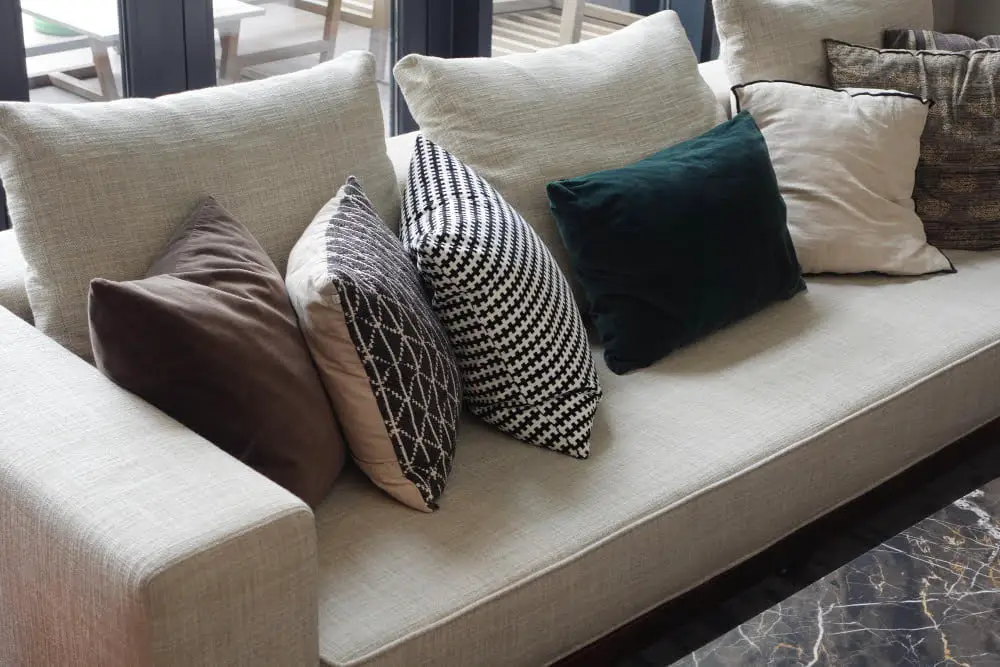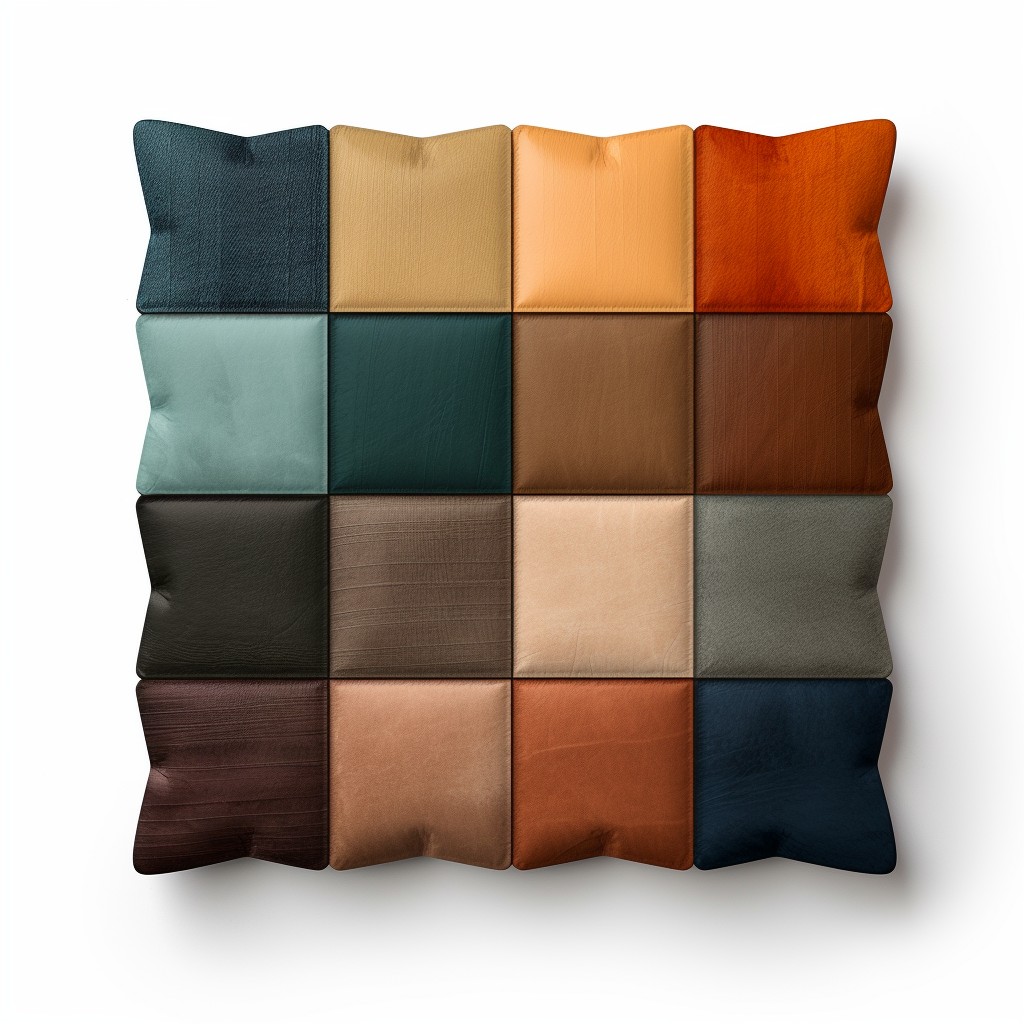Last updated on
Discover the joy of creating your own cozy and stylish couch cushion with our simple, step-by-step guide designed to help you transform your living space effortlessly.
Looking to add some comfort and style to your living room without breaking the bank? Look no further than DIY couch cushions! Not only are they a budget-friendly way to update your space, but they also allow you to customize the look and feel of your furniture. Whether you prefer plush and cozy or sleek and modern, there’s a cushion out there for you.
In this article, we’ll show you how to create your own custom couch cushions that will have all of your guests begging for a seat on the sofa. So grab some fabric, foam, and a sewing machine – it’s time to get crafty!
Key takeaways:
- Assess your cushion needs – replace or update?
- Measure your couch for accurate cushion sizes
- Choose the right cushion material for durability and comfort
- Select the appropriate foam density based on use and preference
- Determine the optimal cushion thickness for support and comfort
Table of Contents
Assessing Cushion Needs

Before you start your DIY couch cushion project, it’s important to assess your needs. Consider the current state of your couch cushions and whether they need to be replaced or simply updated.
If you’re dealing with sagging or worn-out cushions, replacing them entirely may be necessary for optimal comfort and support.
On the other hand, if you’re happy with the overall shape of your existing cushions but want a fresh look, updating their covers can do wonders for transforming the appearance of your furniture. Assessing what exactly needs to be done will help guide decisions on materials needed and steps required in creating new custom-made couch cushions.
Consider how often you use this piece of furniture as well as who uses it most frequently when determining cushion thicknesses and foam densities that would best suit both comfort levels while also ensuring durability over time.
Measuring Your Couch for Accurate Cushion Sizes

This will ensure that your new cushions fit perfectly and look great on your furniture. Start by measuring the length and width of each seat cushion area, as well as the height from top to bottom.
Be sure to take into account any curves or angles in the design of your couch.
For backrest cushions, measure both their length and width at their widest points. If you’re planning on creating custom-shaped backrests or armrests, use a flexible tape measure or string to get an accurate measurement of these areas.
Choosing the Right Couch Cushion Material
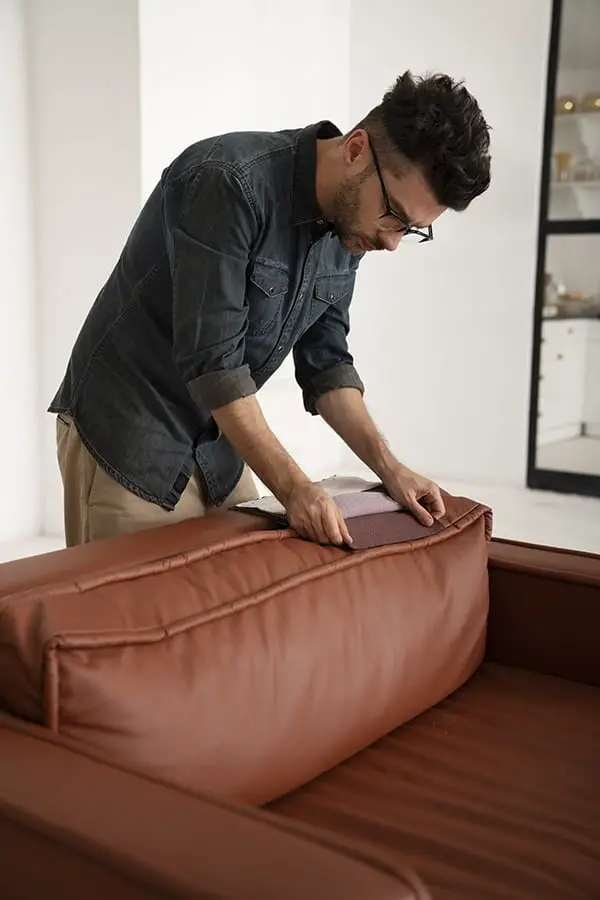
First and foremost is durability. You want a cushion that can withstand daily use without losing its shape or support over time.
Foam rubber is an excellent choice for this reason, as it’s both durable and supportive.
Another important factor to consider when selecting cushion materials is comfort level. If you’re looking for something plush and cozy, then down-filled cushions might be the way to go; however, if you prefer firmer support with less give, foam rubber may be more suitable.
Think about maintenance requirements when choosing your cushion material – some fabrics require special care instructions or may not hold up well under frequent washing or cleaning.
Selecting the Appropriate Foam Density
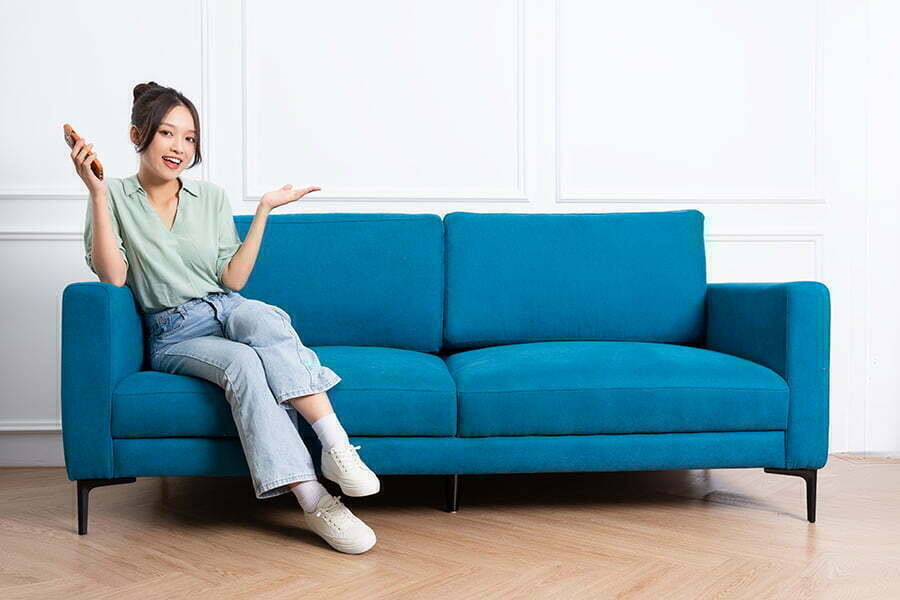
First and foremost, you’ll need to think about how often the cushions will be used. If they’re going to be sat on frequently or for long periods of time, then a higher density foam is recommended as it will provide more support and last longer.
Another factor that can impact your decision is personal preference. Some people prefer firmer cushions while others like them softer and more plush.
It’s important to keep in mind that higher density foams tend to feel firmer than lower densities.
Lastly, consider the size of your cushion when choosing foam density – larger cushions may require denser foam in order not sag over time.
Determining Cushion Thickness

First and foremost, you’ll want to think about how much support you need. If you prefer a firmer seat, opt for thicker foam that will provide more structure and stability.
On the other hand, if comfort is your top priority, go for a softer cushion with less density.
Another important consideration is the size of your couch. Larger sofas typically require thicker cushions in order to maintain their shape over time and prevent sagging or flattening out too quickly.
It’s also worth noting that different types of foam have varying levels of firmness at different thicknesses. For example, high-density foam may feel quite firm even when only an inch thick while low-density foam may require several inches in order to achieve the same level of support.
Ultimately, finding the right cushion thickness will depend on your personal preferences as well as practical considerations like sofa size and intended use.
Cutting DIY Couch Foam Down to Size
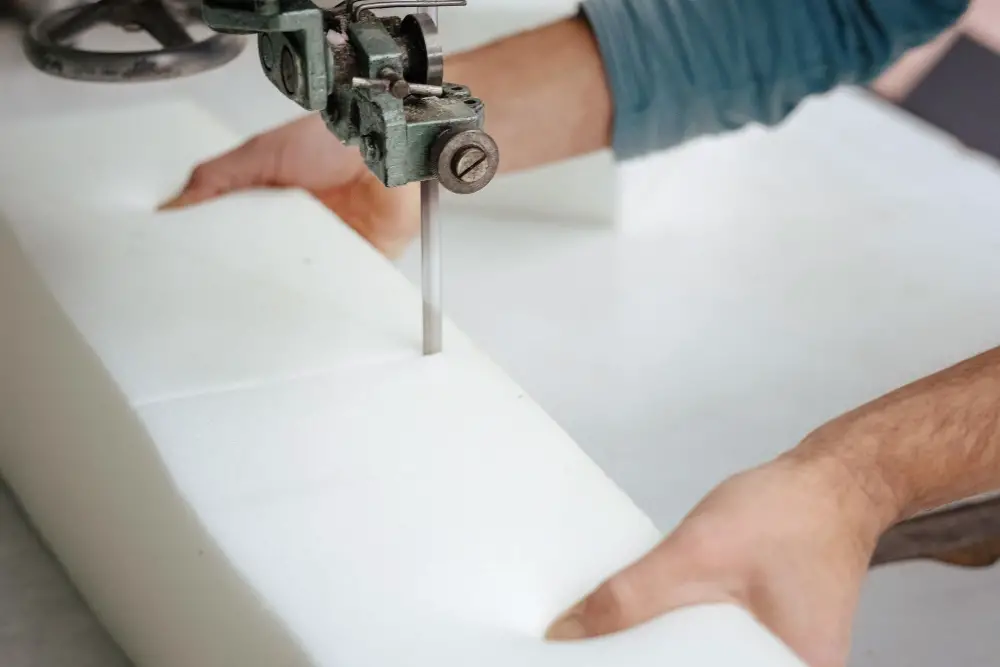
This step is crucial in ensuring that your cushions fit snugly on your couch and provide optimal comfort.
To begin, use a measuring tape or ruler to mark the dimensions of each cushion onto the foam. Then, using an electric carving knife or serrated bread knife, carefully cut along these lines.
Be sure to make straight cuts at a 90-degree angle for clean edges.
If you’re working with thicker foam pieces that are difficult to cut through in one pass, try making multiple shallow passes instead of forcing the blade through all at once. This will help prevent jagged edges and uneven surfaces.
Remember: measure twice before cutting! It’s always better to double-check your measurements than end up with cushions that don’t fit properly on your couch.
Fabric Options for Cushion Covers
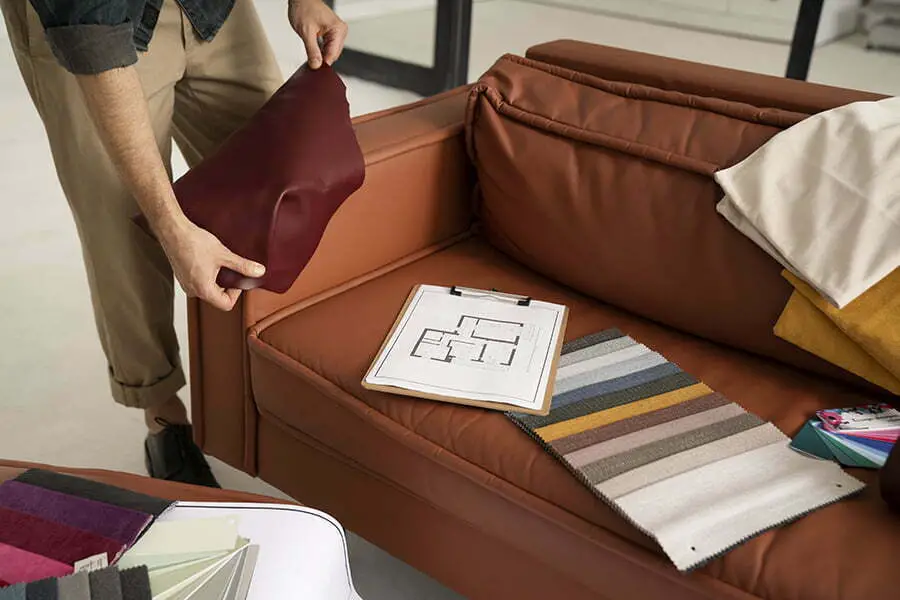
First and foremost, you’ll want to select a material that is durable enough to withstand daily wear and tear. Cotton twill or canvas fabrics are great options as they’re both sturdy and easy-to-clean.
If you’re looking for something with more texture or pattern, consider using upholstery-grade fabrics like chenille or velvet. These materials not only add visual interest but also provide extra comfort when lounging on your couch.
Another factor to keep in mind is color choice – do you want something bold and eye-catching or neutral and understated? Remember that darker colors tend to hide stains better while lighter shades can brighten up a room.
Ultimately, the fabric choice will depend on personal preference as well as practicality.
Covering Foam With Batting
Batting helps smooth out any bumps or lumps in the foam and provides a soft layer between the foam and fabric. To cover your DIY couch cushion with batting, simply lay out a piece of batting that’s slightly larger than your cushion on a flat surface.
Place the cushion on top of it, making sure that there’s enough excess around all sides.
Next, fold over one side of the batting so that it covers half of the cushion width-wise. Then fold over another side so that both sides overlap in the middle by about an inch or two.
Repeat this process for each remaining side until all four are covered by overlapping layers of batting.
Sewing DIY Couch Cushion Covers
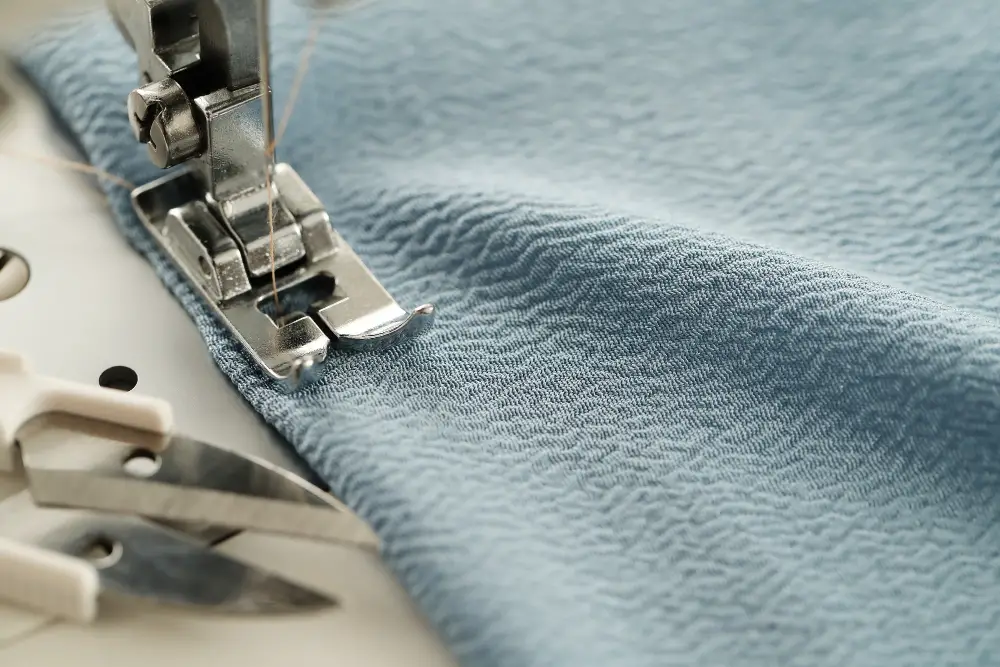
Sewing DIY couch cushion covers is a fun and easy way to add a personal touch to your furniture. First, measure the dimensions of each cushion carefully so that you can cut out fabric pieces that are slightly larger than needed for seam allowances.
Next, choose a durable upholstery fabric in a color or pattern that complements your decor style. Cut two identical pieces of fabric for each cushion cover – one for the top and one for the bottom – as well as strips of matching or contrasting material if you want piping around the edges.
Sew together all four sides of both top and bottom pieces using either an overlock stitch on an overlocker machine or by using zigzag stitches on regular sewing machines. If adding piping, sew it onto one piece before attaching them together.
Turn right side out through any opening left unsewn (usually at least 1/4 inch) along one edge after stitching three sides closed; insert foam into cover; hand-sew remaining edge shut with needle & thread.
Adding Zippers for Easy Removal
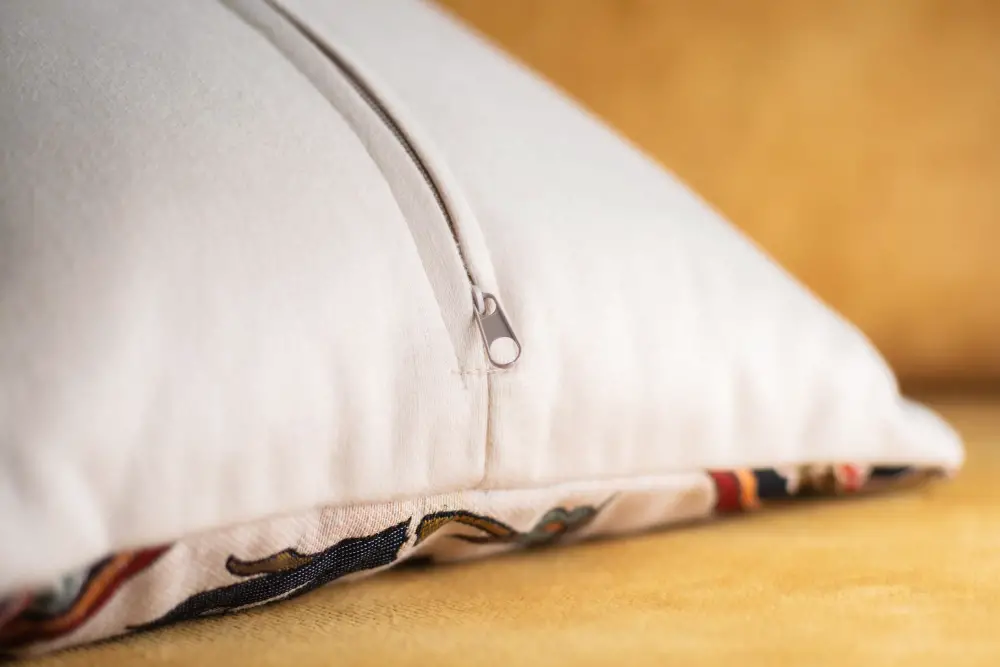
Not only does this save you time and effort, but it also helps prolong the life of your cushions by allowing you to wash or replace the covers as needed. When choosing zippers for your cushion covers, be sure they are sturdy enough for frequent use and match the color of your fabric.
To add a zipper, start by measuring where you want it placed on each cushion cover. Then sew one side of the zipper tape onto one edge of each cover piece with right sides facing together using a zipper foot attachment on your sewing machine.
Next, align both pieces with right sides facing together again so that their edges meet at the centerline where there will be no seam allowance left after sewing in place (this ensures that when closed up later everything lines up perfectly). Sew along this line from top-to-bottom stopping just before reaching either end so as not cut into any corners or curves which could cause puckering during installation.
Creating Piping for a Finished Look
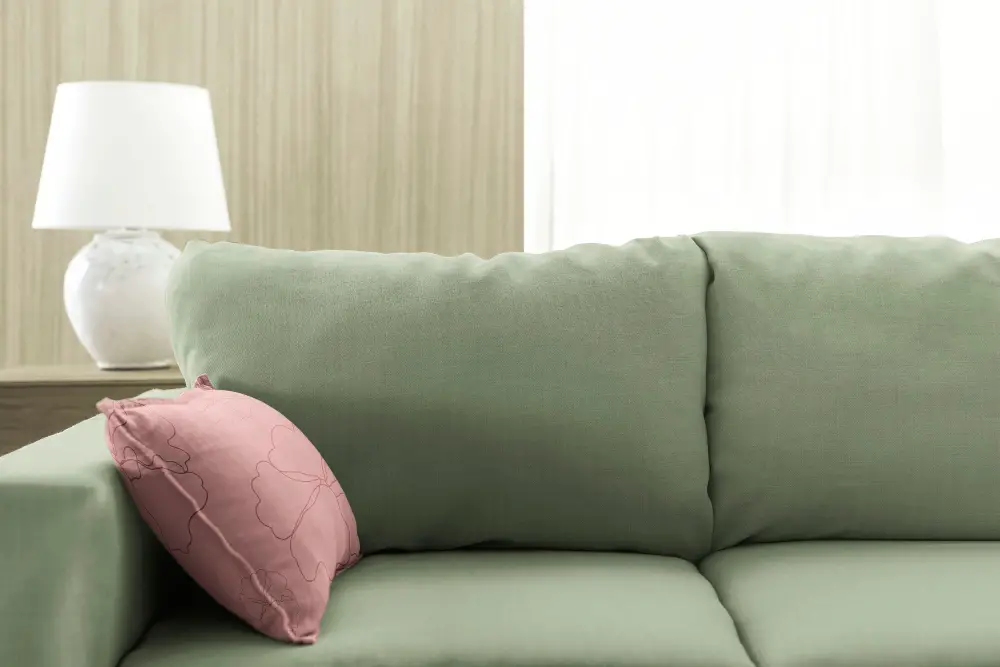
Piping is a decorative trim that can be added around the edges of your cushions for an extra touch of style and sophistication. It’s also great for hiding any imperfections in your sewing or cutting.
To create piping, you’ll need some cord and fabric strips cut on the bias (diagonally across the grain). Fold each strip in half lengthwise with right sides facing outwards, then insert cord into one end of each strip.
Sew along this edge as close to the cord as possible using a zipper foot attachment on your sewing machine.
Once all strips are sewn together with cords inserted inside them, it’s time to attach them onto cushion covers by placing them between two layers of fabric before stitching everything together.
Attaching Cushion Covers to Foam
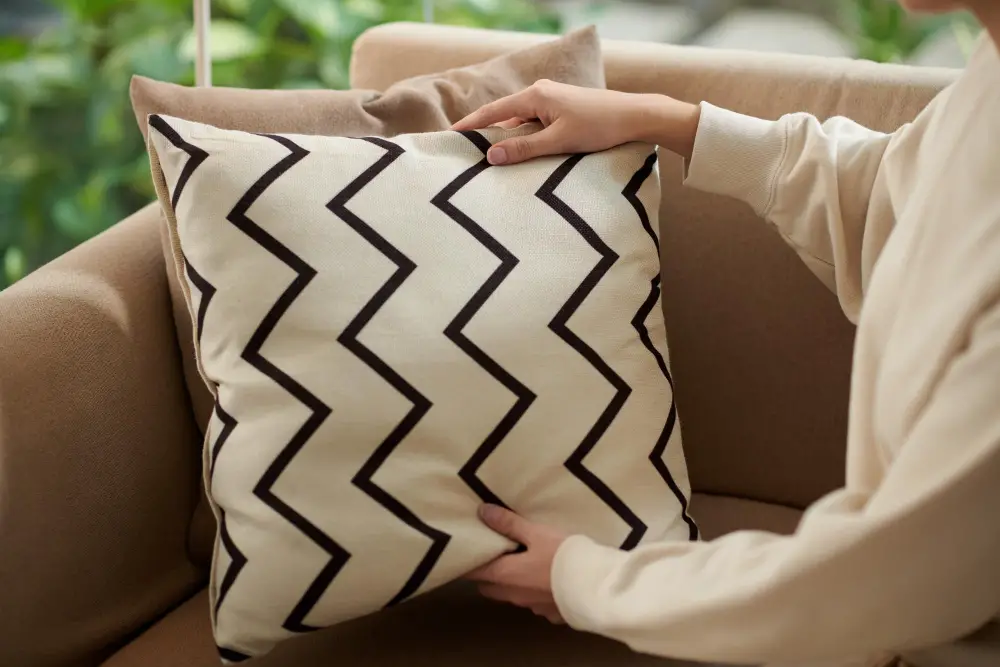
This step is crucial in ensuring that your cushions look neat and tidy while also staying securely in place on your couch. One of the easiest ways to attach cushion covers is by using Velcro strips or snaps.
Simply sew one side of the Velcro strip or snap onto the backside of each cover and then adhere it directly onto the foam.
Another option for attaching cushion covers is by using a staple gun. To do this, start at one end of your cushion and pull tautly over both sides before stapling into place along all four edges with a staple gun.
Proper Cushion Placement
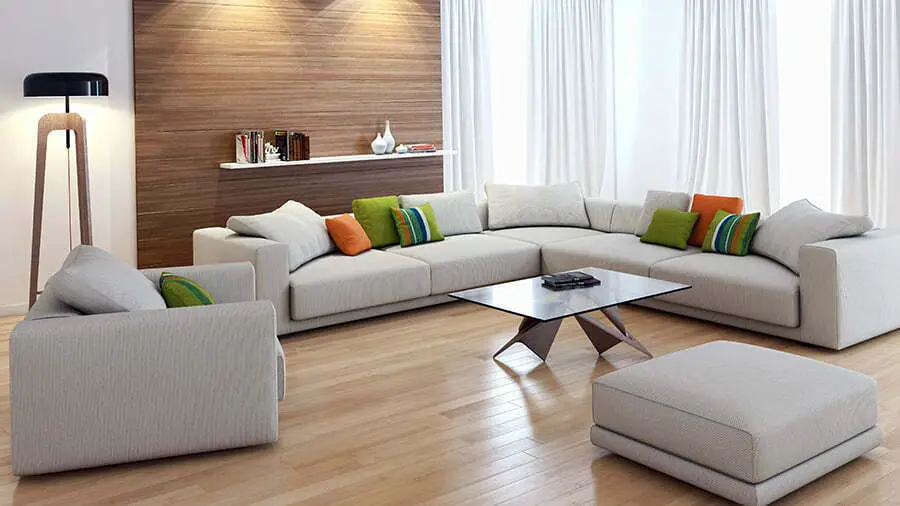
Proper cushion placement can make all the difference in how inviting and cozy your living room feels.
Start by arranging the largest cushions at the back of the sofa, leaning against any pillows or decorative accents you may have. These larger cushions provide support for your back while sitting upright.
Next, add smaller accent pillows in front of these larger ones to create depth and visual interest. Mix up shapes, sizes, colors and patterns to create a unique look that reflects your personal style.
Don’t forget about throw blankets! Drape a soft blanket over one armrest or across an ottoman for added coziness during chilly evenings spent lounging on the couch with loved ones.
Upholstering Couch Sides
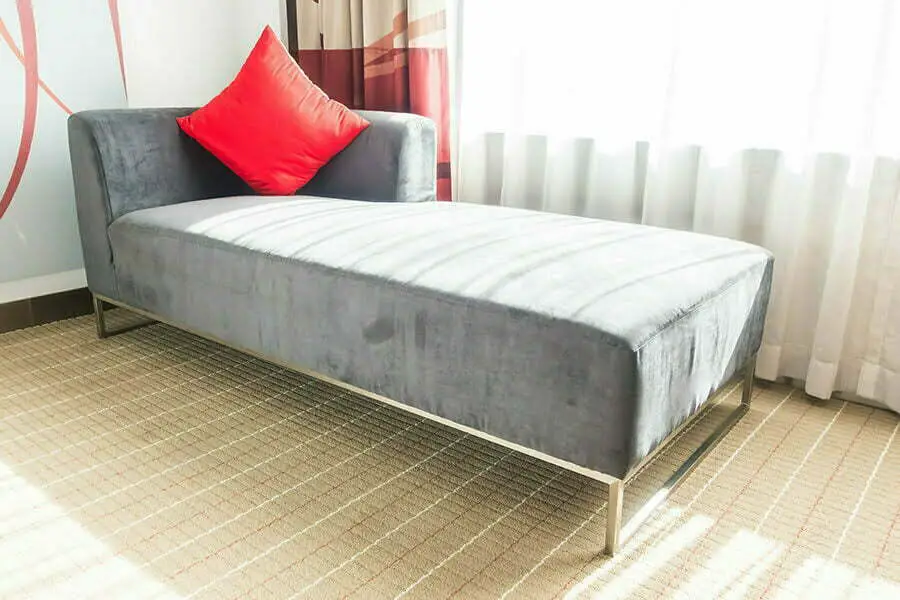
Upholstering the sides can give your furniture a polished and professional look that will impress all who see it. To get started, measure the length and width of each side panel on your couch.
Cut out pieces of fabric that are slightly larger than these measurements to ensure full coverage.
Next, lay out each piece of fabric flat with its right side facing down. Place one foam cushion against the edge of each panel so that they’re flush with one another.
Fold over both edges around 1 inch (2-3 cm) towards their wrong side and pin them in place along both long edges using straight pins or clips.
Sew along these pinned edges using a sewing machine or by hand stitching for added durability if needed. Attach this newly upholstered panel back onto its respective spot on the couch frame by stapling it securely into place underneath where no staples will be visible from above.
Using Fabric to Cover the Plywood Edges On the Couch Seat
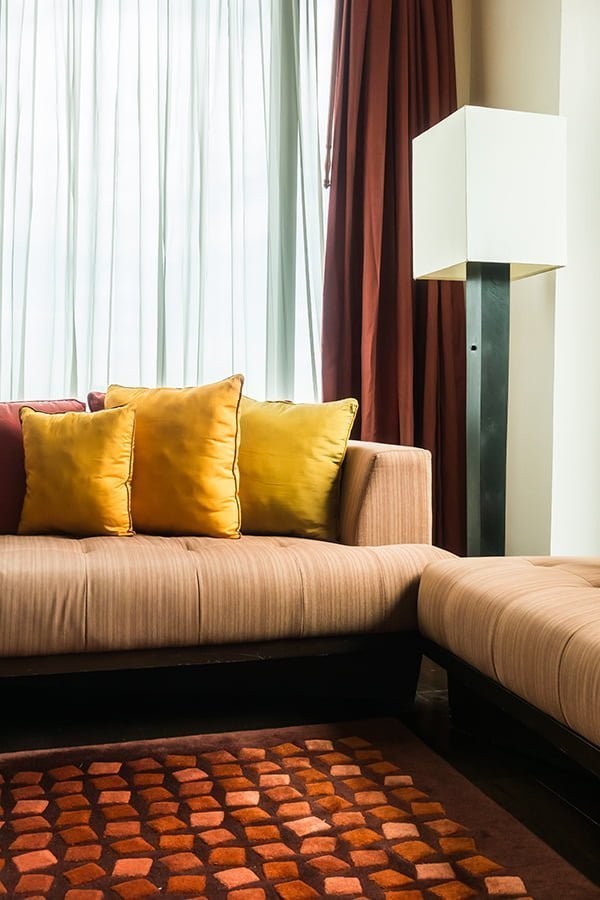
One way to achieve this is by covering the plywood edges on the couch seat with fabric. This not only hides unsightly edges but also adds a decorative touch to your furniture.
To get started, measure the length and width of each piece of plywood that needs covering. Cut strips of fabric that are 2 inches wider than each piece and long enough to wrap around both sides.
Next, fold over one edge of the fabric strip by half an inch and press it down with an iron. Then place this folded edge along one side of the plywood so that it covers both sides evenly.
Using a staple gun or upholstery tacks, secure the folded edge in place along one side before pulling tightly across to cover all exposed areas on top before securing again at opposite end using staples or tacks as well.
Maintaining Couch Cushions

Regular cleaning is key – vacuuming or brushing off any loose dirt and debris will help prevent stains from setting in. If spills do occur, blot them up immediately with a clean cloth or paper towel before they have a chance to soak into the fabric.
For more stubborn stains, spot cleaning with a mild detergent solution can be effective. Be sure to test any cleaners on an inconspicuous area of the cushion first before applying it more broadly.
In addition to regular cleaning, rotating your cushions periodically can also help extend their lifespan by distributing wear and tear evenly across all sides of the cushion.
Spot Cleaning Tips
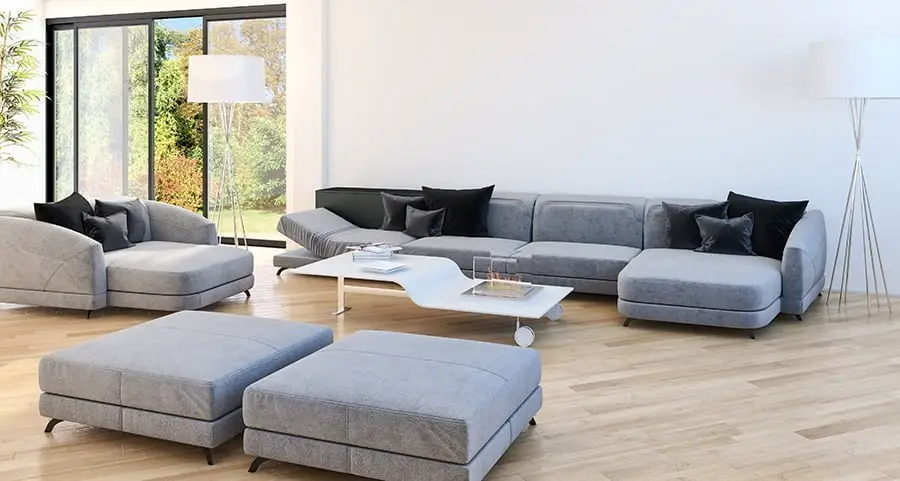
Spot cleaning is a quick and easy way to remove stains without having to wash the entire cushion cover. To spot clean your cushions, start by blotting up any excess liquid with a clean cloth or paper towel.
Then mix together a solution of mild detergent and warm water in a spray bottle.
Spray the solution onto the stain and let it sit for 5-10 minutes before gently rubbing with a soft-bristled brush or sponge. Be sure not to scrub too hard as this can damage the fabric fibers.
Once you’ve removed as much of the stain as possible, rinse away any remaining soap residue with cool water using another spray bottle or damp cloth. Blot dry with another clean towel until most of the moisture has been absorbed.
For tougher stains like red wine or coffee spills, try mixing equal parts hydrogen peroxide and baking soda into a paste-like consistency then apply directly onto affected areas before following previous steps mentioned above.
Customizing Cushion Appearance

One way to do this is by adding decorative elements such as buttons or piping. Buttons can be sewn onto the cushion cover for a classic look, while piping adds a finished touch around the edges.
Another option is to experiment with different fabrics and textures. Consider using patterned fabric for one side of your cushion covers and solid-colored fabric on the other side for versatility in styling options.
You could also try mixing materials like velvet or faux fur with cotton or linen.
If you’re feeling particularly adventurous, consider adding embellishments like tassels or fringe along the edges of your cushions for an extra pop of personality.
Seasonal Cushion Updates
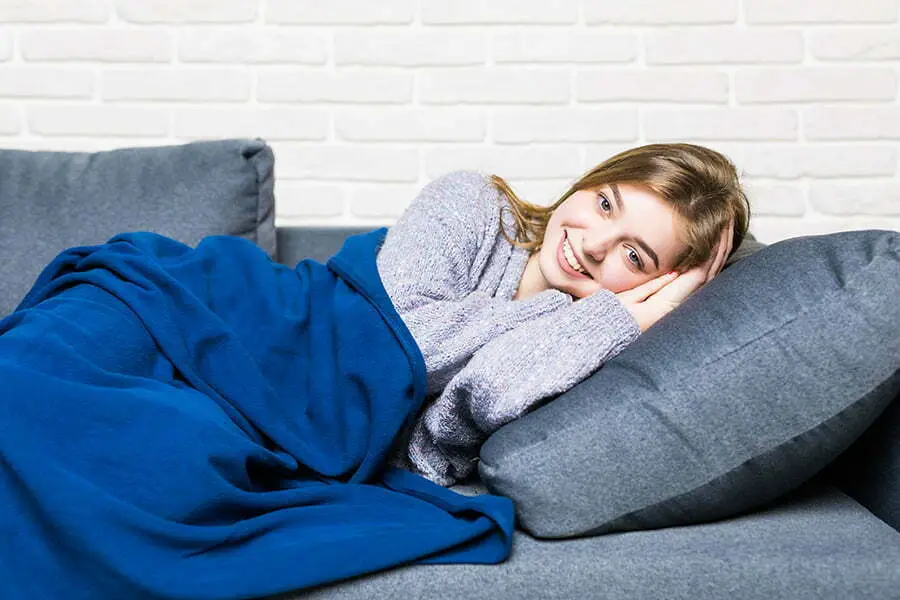
Why not update your DIY couch cushions to reflect the current season? It’s an easy way to add a touch of seasonal flair to your living room without having to completely redecorate. For example, in the fall you can switch out bright summer colors for warm oranges and browns or even add some cozy plaid patterns.
In winter, consider adding faux fur covers or velvet fabrics for extra warmth and comfort. Spring is all about pastels and floral prints while summer calls for light fabrics like linen or cotton in bright hues such as yellow or turquoise blue.
Updating your DIY couch cushions with each passing season is also a great opportunity to experiment with different textures, patterns, and colors that complement each other perfectly while still maintaining harmony within your overall decor scheme.
Replacing Worn-Out Cushions
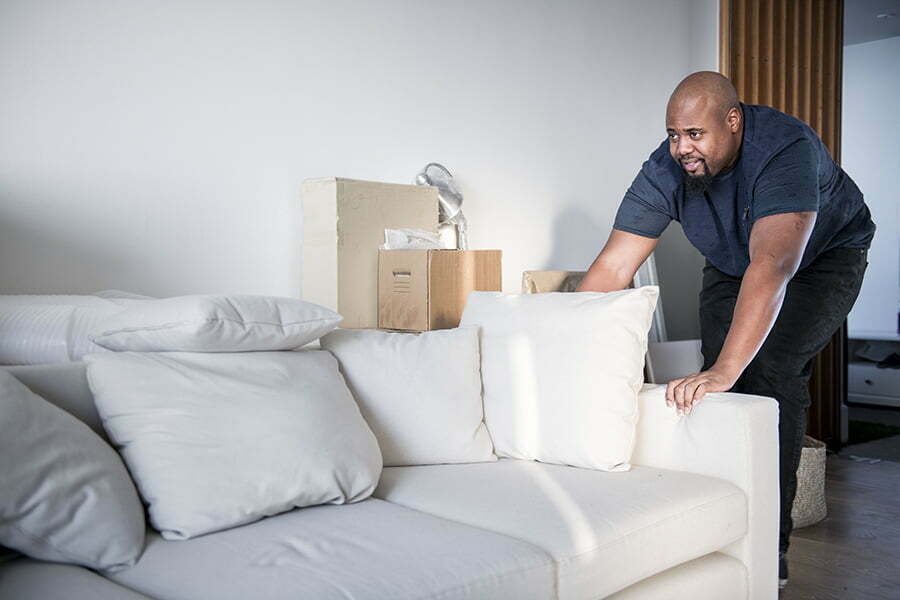
If your DIY couch cushions have seen better days, it may be time to replace them entirely. Fortunately, this is a relatively simple process that can breathe new life into your furniture.
To start with, remove the old cushion covers and measure the foam inserts inside. You’ll want to purchase replacement foam that matches these measurements as closely as possible for a snug fit.
Once you’ve got your new foam in hand, follow our guide above for cutting it down to size and covering it with batting before sewing on a fresh cover made from fabric of your choice.
By replacing worn-out cushions instead of buying an entirely new piece of furniture or hiring someone else to do upholstery work for you – which can be expensive – you’re saving money while still enjoying all the benefits that come with having comfortable seating in your home!
FAQ
What is the best material for couch cushion filling?
The best material for couch cushion filling is foam wrapped in a layer of fibre (SupaWrap), as it offers the support of foam, the softness of fibre, and is more affordable than feather wrap.
What can I fill my sofa cushions with?
You can fill your sofa cushions with foam for firm support, or fiber or feather filling for a softer feel that allows sinking in.
How can I make my saggy couch firmer?
To make your saggy couch firmer, add extra foam to the sofa cushions by unzipping the cover and inserting the desired amount of foam.
What type of foam is most suitable for couch cushion support?
High-density polyurethane foam is the most suitable type for couch cushion support.
How do you properly measure and cut fabric for DIY couch cushion covers?
To properly measure and cut fabric for DIY couch cushion covers, accurately measure the dimensions of the cushion (length, width, and depth), add seam allowance and any additional desired allowance for fitting, and then cut the fabric accordingly.
What are some effective techniques for maintaining the shape of couch cushions over time?
Some effective techniques for maintaining the shape of couch cushions over time include regularly flipping and rotating them, using cushion support inserts, and gently patting and fluffing them to redistribute the filling.
You may also like to read:
